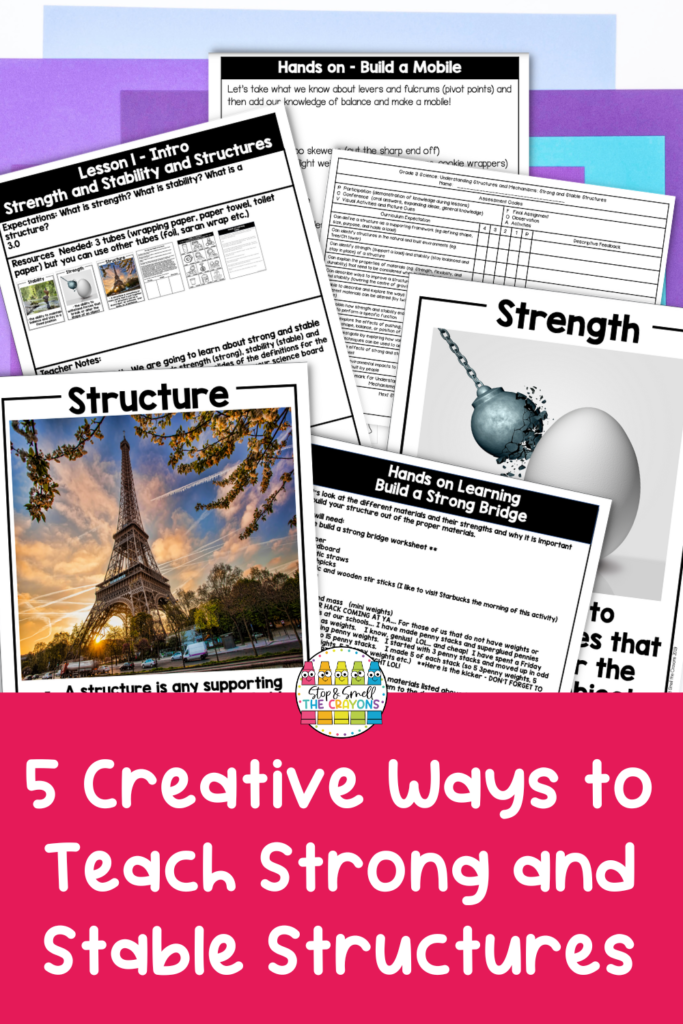Strong and Stable Structures can be a bit tricky for students to grasp when simply presented with straight facts. Most students need a visual or experiment to understand these concepts. If you are looking for new ideas to bring the concepts of Strong and Stable Structures to life, then look no further! You have come to the right place! Here are 5 creative ways to teach Strong and Stable Structures that have been a hit in my classroom! Give them a try and see the results for yourself!
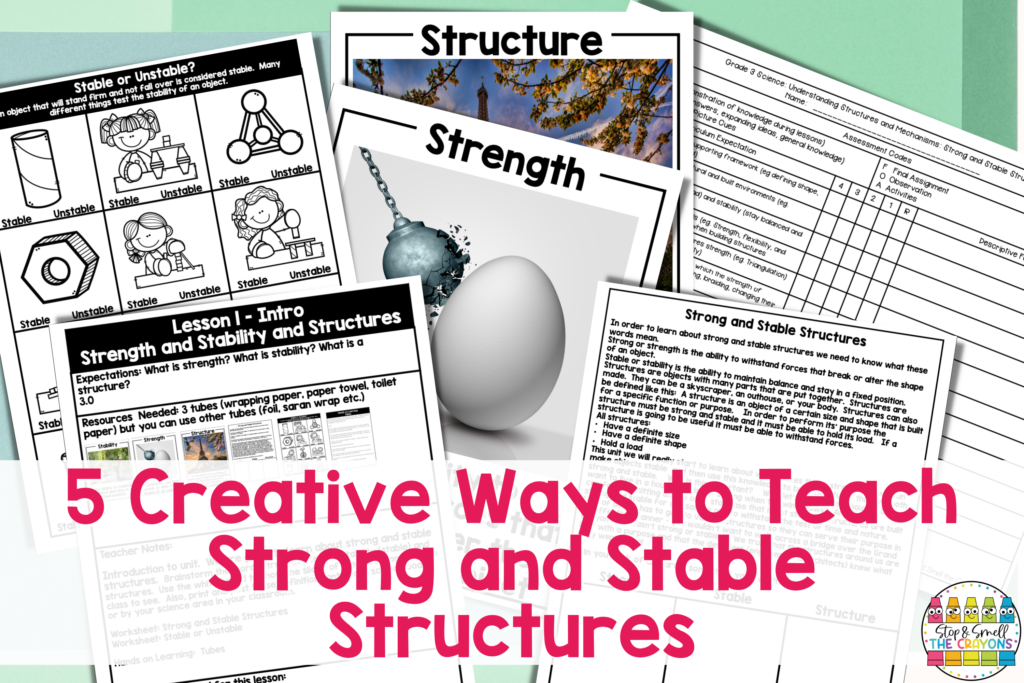
Strong and Stable Structures Concepts can be taught through Yoga
My students love practicing yoga! It is a great activity for brain breaks, in Physical Education class, or as a transition activity while you wait for others to finish up and join you on the carpet for your next activity. Not only is it fun, but yoga can be used to enhance your teaching of strong and stable structures! If you have ever tried yoga yourself, I think you know where I’m headed with this! It will only take a few tries of standing on one foot for students to really get the idea of stability!
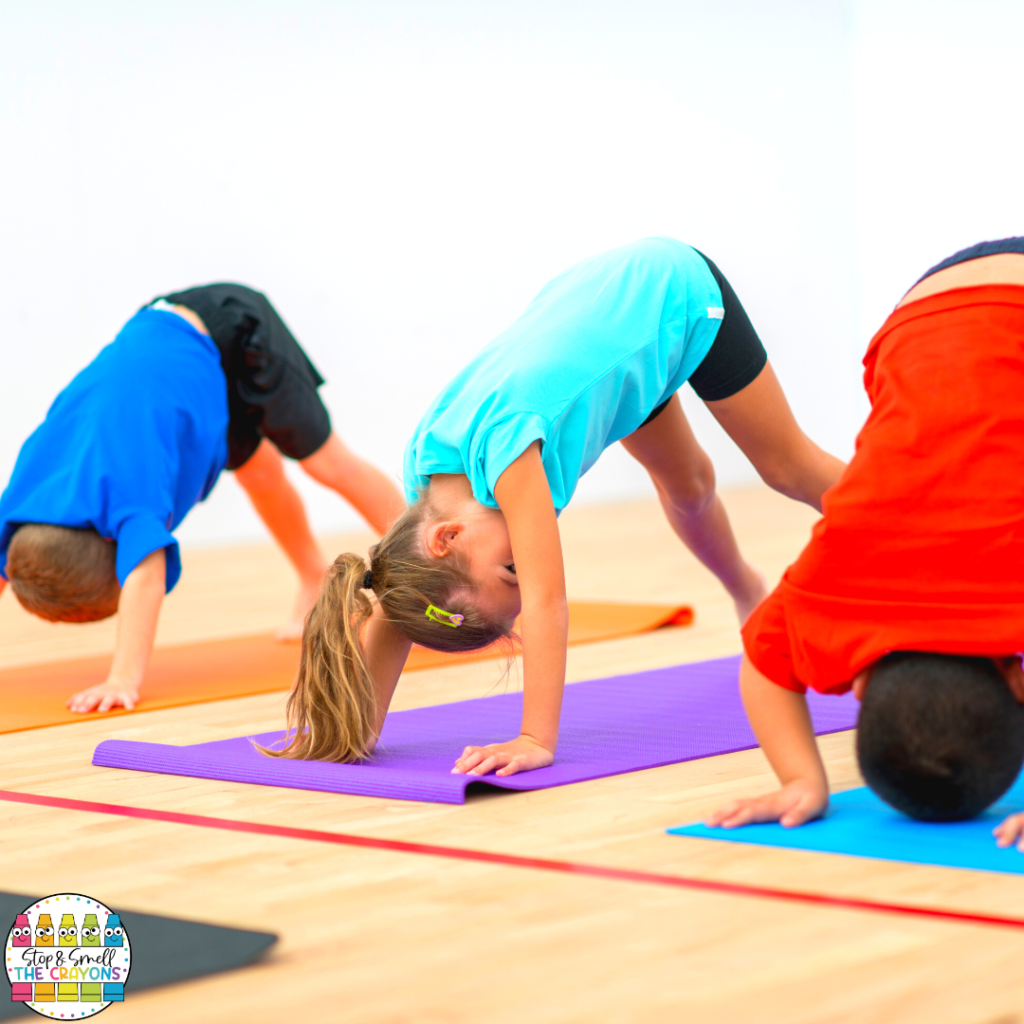
But seriously, yoga can help teach kids about strong and stable structures in many ways. Yoga poses like the tree pose and the warrior pose, require balance and stability, which can help your students understand the importance of having a strong base and using it to support their bodies.
Yoga can also teach your students that alignment is very important when building a stable structure. If a structure is not aligned properly, it could potentially fall over or collapse. And no one wants to be responsible for that!
Ask your students to position themselves to show stable poses as well as strong poses! Conversely, they can pose to show what a “weak” pose may look like and compare what makes one pose strong and the other weak! Just trust me on this. . . your students will understand the concept better and have a lot of fun at the same time!
A Strong and Stable Structures Balance Extravaganza
Balance is key to strong and stable structures. With some very quick, simple games, your students will easily catch on to balance and why it is important! I always hold a Balance Extravaganza where my students play “Minute to Win it” style games that focus on balance!
Here are the games that we like to play:
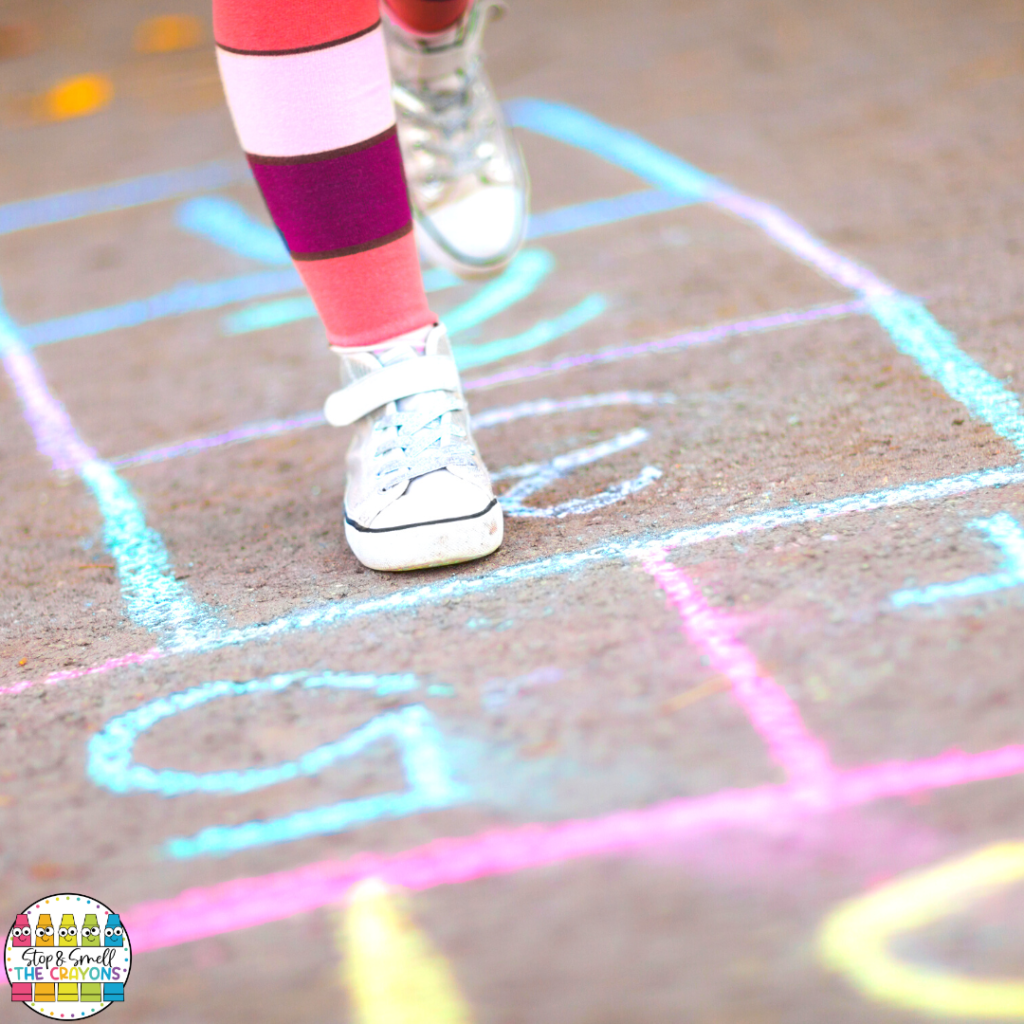
- Build a house of cards – Students stack playing cards to build a house! Ask them how many playing cards can you use before it falls down. What makes their house strong? Stable? Balanced?
- Jenga – The ultimate balance game! Students identify and get first-hand knowledge of what makes something stable and balanced!
- Twister – Students use their bodies to understand how the movements either help or hurt their balance. For safety, I supervise this game.
- Hopscotch – While your students are playing hopscotch, ask some leading questions. Can you jump on your left foot only? Right foot only? Backward? Discuss how jumping on one foot impacts balance.
- Balloon on a spoon race – Students place a balloon on a spoon to see how many times they can make it from point A to B in one minute without dropping the balloon!
- Balance 5 ping pong balls on a flat board – Ask students to hold a board and balance 5 balls on the board. Students should try to keep as many balls on the board as they can for one minute.
- Stay balanced on one foot for a minute – Have students stand with one foot on a dot and close their eyes! Students should try to stay balanced on one foot for one minute.
When students play these games, they are putting into practice the concepts you have taught them. They are seeing through real-world experiences just how balance works and they won’t forget what they learned!
Hands-On Learning
There is no better way for students to apply the knowledge of Strong and Stable Structure concepts that you have taught them than to actually build a structure themselves! Students take what they have learned about trusses, girders, beams, and struts to construct bridges out of an assortment of materials. This STEM activity can be done on a large or small scale, whichever you feel works best in your classroom.
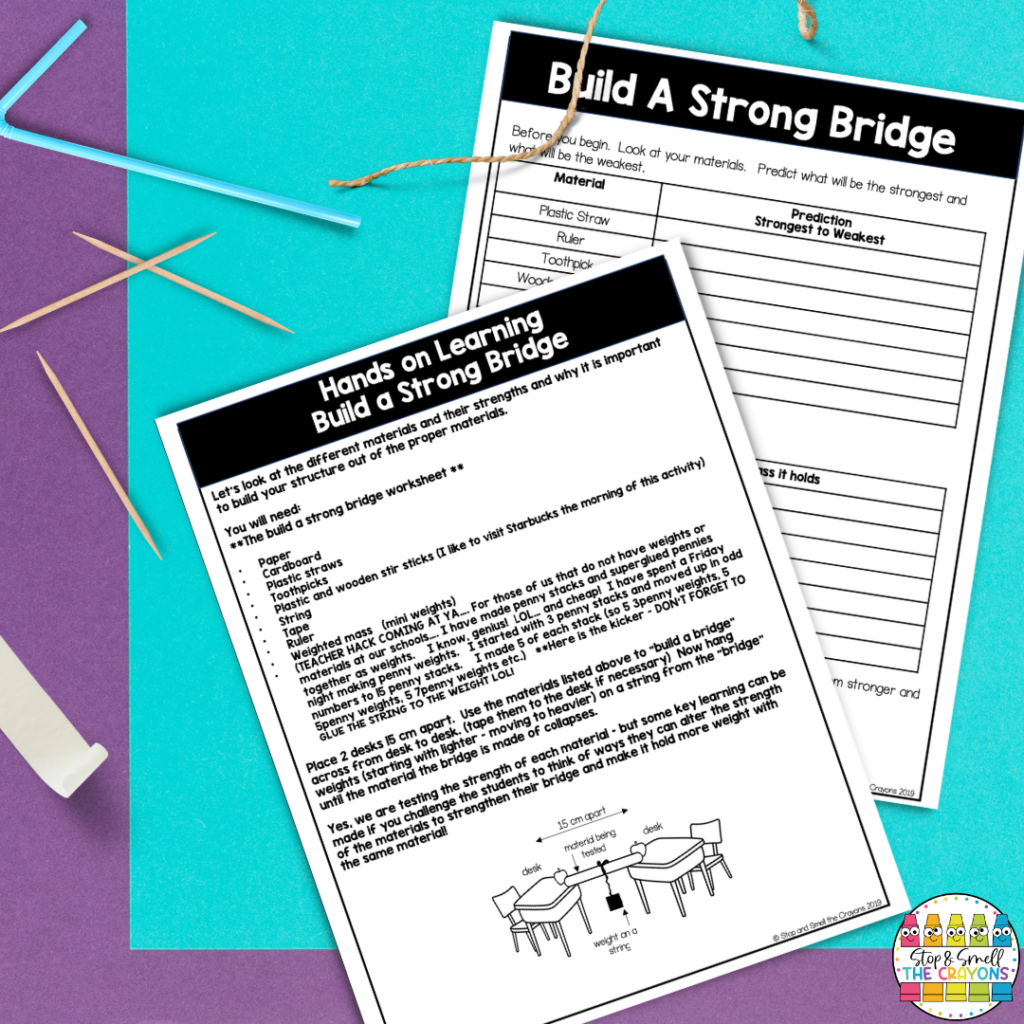
When planning a bridge project, consider these fun ideas:
- Have students build a bridge using 10 marshmallows and 20 toothpicks. The bridge must be able to go over one of the student’s shoes.
- For a more impressive bridge, ask students to build a bridge that spans across 2 desks and can hold the weight of a textbook!
- Give students Legos to create a bridge! Students must use their bricks to build a bridge that can hold weight. Then test it to see how much weight each one holds.
- Ask students to make a drawbridge using only string, tape, and cardboard!
For any of these ideas, feel free to add extra parameters like “the bridge must span 40cm” or “this bridge must hold 3 science books.” Your students will absolutely love this activity. There’s really no better way to put their learning to the test than to put it into practice.
If you love the idea of your students participating in bridge-building activities but don’t know quite where to begin, don’t worry! I have everything you need! My Strong and Stable Structures Pack includes beautiful example pictures, vocabulary, printable student pages, and Teacher Lesson Notes. You can find it in my TPT Store!
Structure Scavenger Hunt
One way to keep students excited about Science concepts is to actually take them out of the classroom! To help your students review different types of structures, take a nature walk outside or head out into your community! For this activity, you will want your students to look for:
- Manmade structures: Bridges, buildings, vehicles, homes
- Natural structures: trees, nests, hives, vines
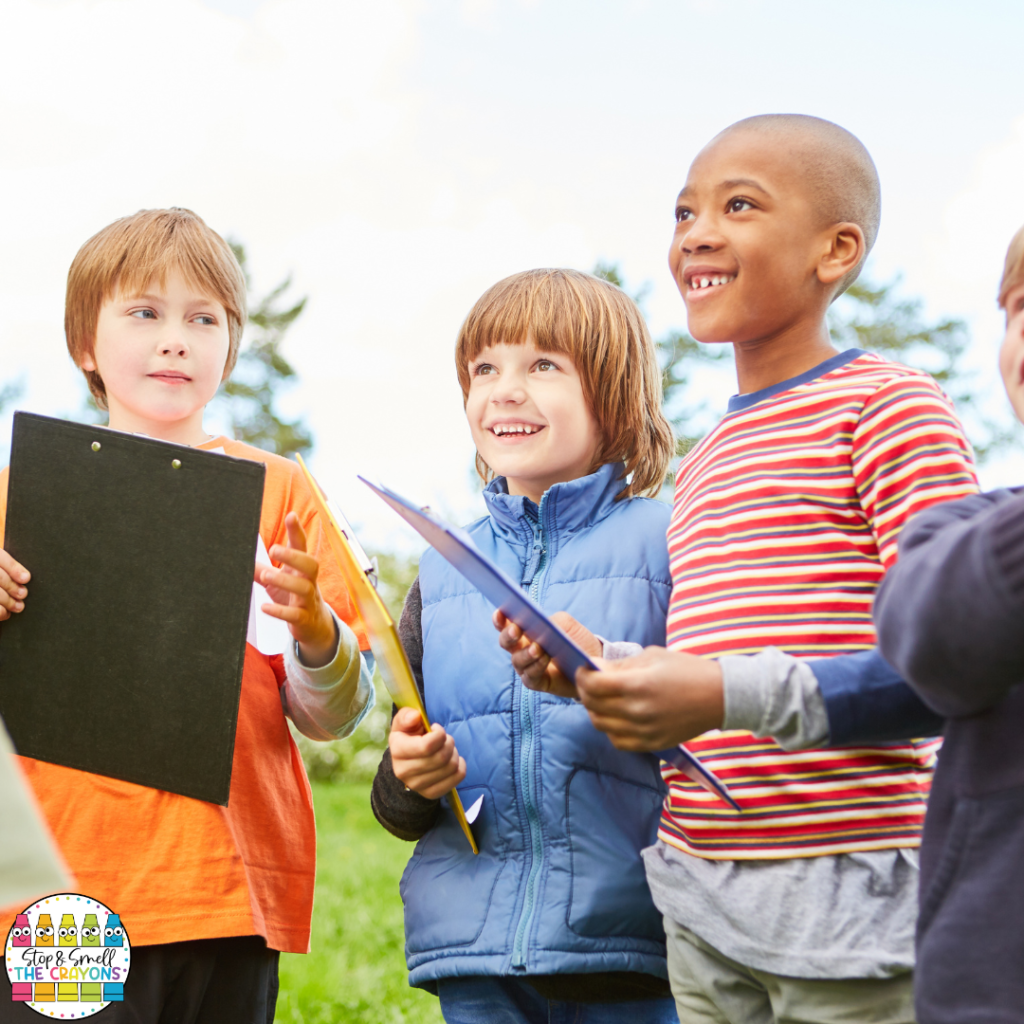
Your students should bring a clipboard and paper so they can take notes and draw what they see. For some added fun, bring a camera or tablet and take pictures of the structures you find while walking. Be sure to keep the focus of this walk on searching for structures by asking questions like:
- What makes these structures strong and stable?
- What does the type of material each structure is made out of contribute to its stability and strength?
- Compare and contrast the different structures you see.
- Discuss the effects of manmade and natural structures.
When the walk is over and you are back in the classroom, ask students to make a Venn Diagram using the ideas you discussed on the walk. If you took a camera along, display the pictures taken for the whole class to see and talk about some of the answers they had to the questions you asked earlier.
This is an excellent review for your students! If you’re like me though, you like to be prepared with some printable worksheets for students to use to organize their information. My Strong and Stable Structures Packet has everything you need for a successful Structure Scavenger Hunt! All you have to do is print and go!
Experiment with STEM challenges
STEM challenges are all the rage these days… And for good reason! They are perfect for hands-on learning and students are fully engaged! STEM challenges promote critical thinking skills, teamwork, and problem-solving, as well. Through STEM challenges, students learn from both mistakes and successes to better understand the concepts they have learned.
For fun STEM challenges in your classroom, try these ideas:
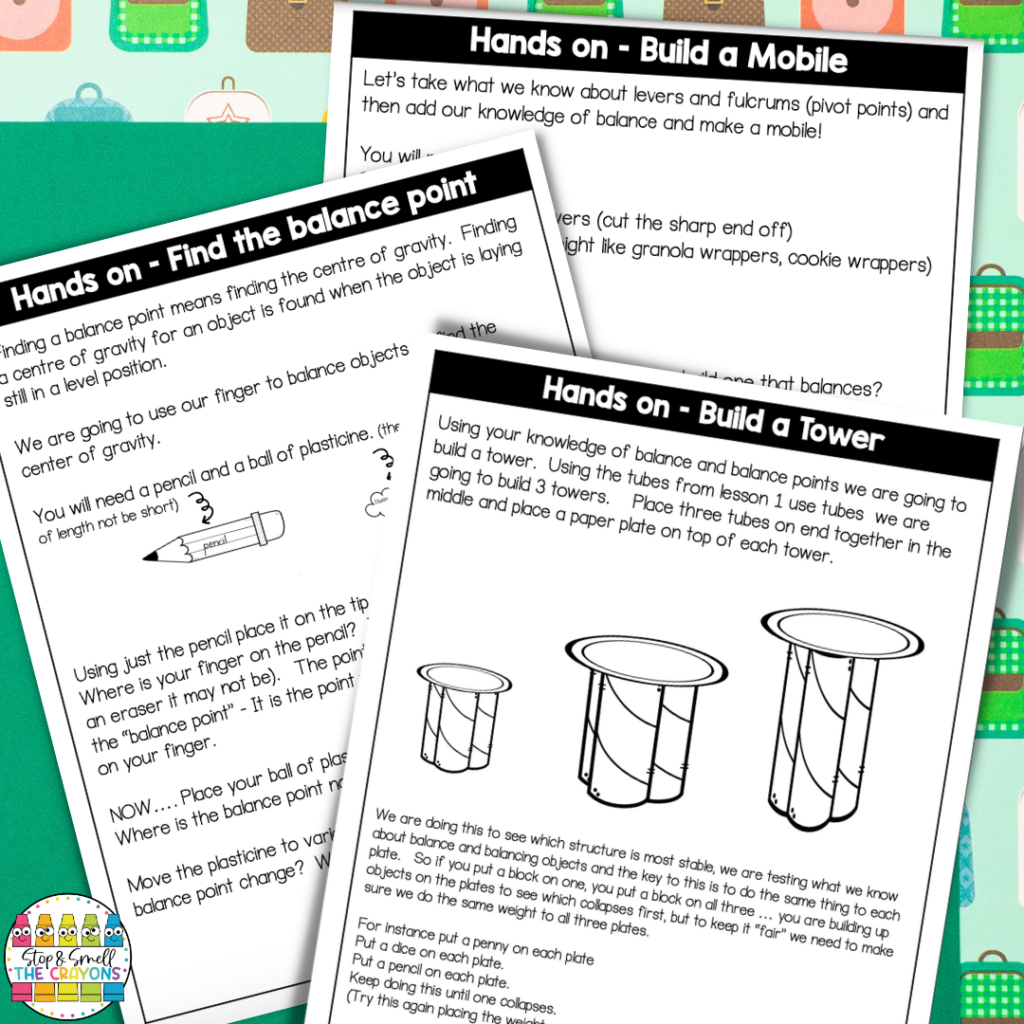
- Make an Inukshuk – Show students pictures of an Inukshuk (stone structure built by the Inuit people) and allow them to work in teams to design and try building their own out of rocks, stones, or bricks.
- Shape Stack – Stack various shapes on top of each other. By stacking different shapes together, students can learn about how different shapes affect the stability of a structure. Try asking your students questions such as, “Can you stack round objects?”
- Make a mobile – Ask students to make a mobile using string or yarn and small objects of varying shapes and sizes (foam cutouts, beads, etc…). Explain that the mobile must hang perfectly balanced.
- Stack pennies – Students can stack pennies as tall as they can without the stack falling over! Their knowledge of balance and stability will help them think critically as to how they can accomplish this task. Ask students how tall they can make a stack. Give them goals to reach for, such as 50 or 100 pennies high.
My class loves science and when I add in STEM challenges their engagement is next level! They love learning, but the learning is enhanced when they get to put it all into practice!
Are you ready to teach Strong and Stable Structures in your classroom?
I know I can’t be the only one who got super excited about teaching about structures after hearing these ideas! So if you’re ready to jump in, let me help you make teaching this standard as easy as possible! Check out my done-for-you Strong and Stable Structures Unit! The unit contains student pages that are print and go as well as vocabulary cards that show picture examples of each word along with the definition. Teacher Lesson Notes help you understand how to teach each lesson in a clear way so there’s no confusion as to how to implement these resources! Not only will your students enjoy these lessons, but your #teacherlife will be so much easier!
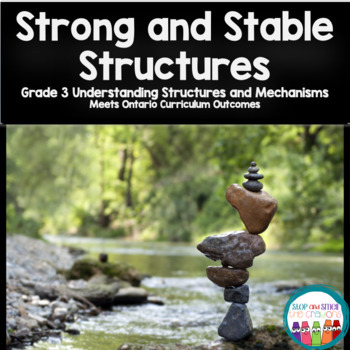
Be sure to grab this Free Strong and Stable Structures Checklist. While this is created for the Grade 3 Ontario Science Curriculum they can be used by anyone! Simply click on the image below to download!
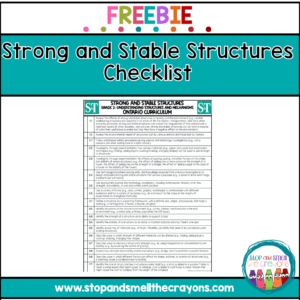
More Grade 3 Science Resources
If you are looking for more engaging and hands-on science resources for third grade, check out these posts:
Pin this Blog Post on Pinterest!
Don’t lose these amazing teaching Strong and Stable Structures ideas! Pin this post to your favorite Teacher Pinterest Board!
